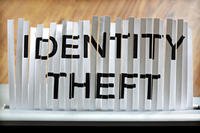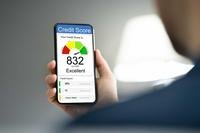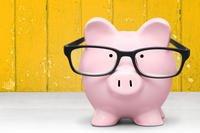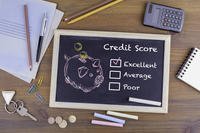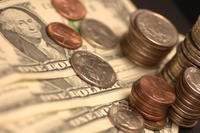You’ll hear some high-profile personal finance experts say that all debt is bad debt. Others clearly separate good debt from bad debt with traditional axioms (student loans and mortgages are good debt; credit cards are bad debt).
The truth may lie somewhere in between. Debt can be a tool that can be used in good or not good ways. Here’s how to know which is which:
Credit Cards
Usually seen as bad debt, believe it or not, there are times when credit card debt can be viewed as good debt. For example, if your washing machine breaks and you are able to finance a new one at a low interest rate, you can avoid potentially expensive and time-consuming trips to the laundromat. Take advantage of “no interest” or low-interest financing on items that you would have to pay for over time, and it may end up just fine.
It’s good debt if: You use it to buy something you need (not something you just want) and pay it off at a reasonable interest rate over a short period of time, allowing you to preserve your savings for true emergencies; or if it allows you to get by during temporary dips in income.It’s bad debt if: Your monthly payments leave you strapped for cash each month (and result in new debt); you can make only minimum payments or pay little over the minimums; your interest rates are high; you take a long time to pay off purchases, which means they are expensive over the long run.
[Resource: Get your free personalized Credit Report Card]
Auto Loans
According to Comerica Bank, the purchase and financing of an average-priced new vehicle took 23.2 weeks of median family income in the first quarter of 2011. Most drivers can’t afford to come up with the kind of cash needed to buy a new or late model used vehicle, so they finance it.
It’s good debt if: It provides you with reliable transportation to get to work or other mandatory commuting, and the interest rate, monthly payment, and term of the loan are reasonable. The amount owed at all times should be less than the market value of the vehicle, so it can be sold to pay off the loan in the case of an emergency.
It’s bad debt if: The loan amount exceeds the value of the vehicle (it’s “underwater”); payments take a significant amount of income, leaving little or no funds for maintenance and repairs; and/or by the time the loan is paid off, the vehicle needs expensive repairs or must be replaced.
Home Mortgages
Unless you inherit a home or manage to pick up a very distressed property that you can afford to pay for with cash (and you have the money to fix it up), chances are you will have to take out a home loan in order to buy a home. Traditionally, mortgages have been considered “good debt.” Until the housing slide began in 2007, chances were good that you were buying an appreciating asset you could sell if you really needed to get out. Now, of course, that’s changed. That doesn’t mean a mortgage isn’t good debt, but it is crucial to know when it’s good or bad debt.
It’s good debt if: The amount you pay each month, minus tax deductions, plus a cushion for upkeep and repairs, is roughly the same as -- or less than -- the amount you would pay to rent a place to live; your mortgage payment is reasonable, allowing you to save and invest and keep other debts low; and you can sell your home and pay off the loan in a reasonable amount of time if needed.
It’s bad debt if: Your home is underwater (you owe more than the amount you could sell the home for); your total house payments account for a significant portion of your monthly income (36% or less is considered ideal); or you’ve bought a home that would be difficult to sell due to location, size, features, etc.
Student Loans
Going to college has usually been seen as an investment in one’s future earning power, and in many cases it is. At the same time, student loan debt is nearly impossible to discharge in bankruptcy and can mushroom when students default.
It’s good debt if: The amount you borrow is reasonable when compared to the salary you’ll earn with that degree over your lifetime.
It’s bad debt if: You don’t complete your degree; the amount of debt you owe is high compared to potential earnings in your field; you can’t make your payments for any reason and default, resulting in additional interest and fees.
---
Credit.com provides readers with unique insight, helpful tips and straight answers about their financial world. Our team of reporters and experts explore credit, loans, debt, saving, and identity theft topics, all designed to help you make smarter financial decisions. Visit Credit.com to sign up for your FREE Credit Report Card and find out where you stand today!
---
Christopher Maag
Credit.com’s Reporter, Chris graduated with honors from the Columbia University Graduate School of Journalism, and has reported for a number of publications including The New York Times, TIME magazine and Popular Mechanics. Reach Chris via email at chris (@) credit.com.

